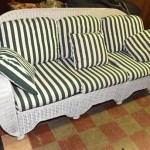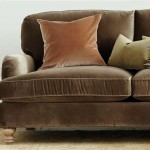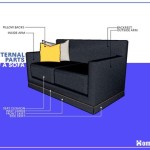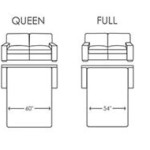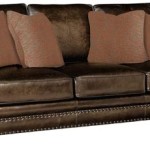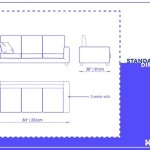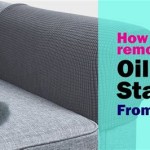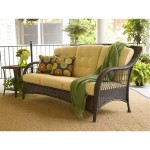The Pursuit of the Most Comfortable Sofa Couch
The sofa couch stands as a cornerstone of modern living spaces. It serves as a gathering place for families, a relaxation zone for individuals, and a statement piece that reflects personal style. However, beyond aesthetics and trends, comfort remains a paramount consideration when selecting a sofa. The search for the "most comfortable sofa couch" is a subjective journey, influenced by individual preferences, body types, and lifestyle needs. Understanding the factors that contribute to comfort will empower consumers to make informed decisions that prioritize relaxation and well-being.
The concept of comfort, particularly in furniture, is multi-faceted. It encompasses factors such as support, resilience, texture, and even temperature regulation. A truly comfortable sofa couch seamlessly integrates these elements to create an inviting and supportive environment for rest and repose. The ideal sofa should alleviate pressure points, promote proper posture, and provide a sense of enveloping relaxation. This article will explore the key elements that contribute to sofa comfort, guiding the reader through the intricacies of materials, construction, and design.
Understanding the Core Components: Frame, Suspension, and Cushioning
The foundation of any comfortable sofa lies within its construction. The frame, suspension system, and cushioning work in concert to provide support and resilience. Any deficiency in these components can compromise the overall comfort and longevity of the sofa.
The frame serves as the skeleton of the sofa, bearing the weight of occupants and withstanding daily use. Hardwood frames, such as kiln-dried hardwood, are generally considered the most durable and resistant to warping. Softwood frames, while less expensive, may be prone to sagging and structural weakening over time. The joinery methods used in frame construction also play a crucial role. Reinforced corners, dowels, and screws contribute to a robust and long-lasting frame.
The suspension system, located beneath the seat cushions, provides support and cushioning. Common suspension types include sinuous springs (also known as zig-zag springs), coil springs, and webbing. Sinuous springs are pre-curved steel wires that run horizontally across the frame. They offer a firm and responsive feel, but can be prone to sagging if made with low-gauge steel. Coil springs, individually encased in fabric pockets, offer excellent support and conform to the body's contours. Webbing, made from interwoven straps of nylon or polypropylene, provides a more yielding and flexible feel. The choice of suspension system depends on the desired level of firmness and support.
The cushioning materials used in the seat, back, and armrests significantly impact the perceived comfort of a sofa. Common cushioning materials include foam, down, feathers, and fiberfill. Each material offers a unique combination of support, resilience, and softness. Foam is a versatile and durable material that provides good support and can be molded into various shapes. High-density foam offers greater support and resistance to compression than low-density foam. Down and feathers offer a luxurious and plush feel, but require regular fluffing to maintain their shape and loft. Fiberfill, made from synthetic fibers, is a cost-effective and hypoallergenic option that provides good cushioning and is relatively easy to maintain. The optimal cushioning combination often involves layering different materials to achieve a balance of support and comfort. For example, a foam core wrapped in down or fiberfill can provide both support and a soft, enveloping feel.
The Importance of Fabric and Upholstery
The fabric or upholstery covering the sofa plays a significant role in both comfort and aesthetics. The texture, breathability, and durability of the fabric influence the overall seating experience. Selecting the right upholstery material depends on personal preferences, lifestyle considerations, and aesthetic goals.
Natural fibers, such as cotton, linen, and wool, offer breathability and a soft, comfortable feel. Cotton is a versatile and affordable option, but it can be prone to staining and wrinkling. Linen offers a crisp and elegant look, but it is also prone to wrinkling. Wool is a durable and naturally stain-resistant option that provides excellent warmth and insulation. However, wool can be more expensive than other natural fibers.
Synthetic fibers, such as polyester, microfiber, and acrylic, offer durability, stain resistance, and affordability. Polyester is a versatile and wrinkle-resistant option that is relatively easy to clean. Microfiber is a soft and plush fabric that is highly resistant to stains and wear. Acrylic is a durable and fade-resistant option that is often used in outdoor furniture. Synthetic fabrics can sometimes lack the breathability of natural fibers, which can lead to discomfort in warm weather. Blended fabrics, which combine natural and synthetic fibers, can offer a balance of comfort, durability, and affordability.
Leather is a luxurious and durable upholstery option that adds a touch of sophistication to any living space. Leather is naturally breathable and develops a unique patina over time. However, leather can be more expensive than other upholstery materials and requires regular conditioning to maintain its suppleness. Different types of leather, such as full-grain, top-grain, and bonded leather, offer varying levels of quality and durability. Full-grain leather, made from the entire hide, is the most durable and develops the most desirable patina. Top-grain leather, made from the top layer of the hide, is more affordable than full-grain leather but is still relatively durable. Bonded leather, made from recycled leather scraps, is the least expensive option but is also the least durable.
The weave of the fabric also affects its comfort and durability. Tightly woven fabrics are generally more durable and resistant to stains, while loosely woven fabrics offer a softer and more textured feel. Velvet, a plush and luxurious fabric with a short, dense pile, offers a soft and comfortable seating experience. However, velvet can be prone to crushing and requires special care to maintain its appearance.
Design Considerations: Ergonomics and Personal Preferences
Beyond materials and construction, the design of a sofa plays a crucial role in its overall comfort. Ergonomic considerations, such as seat depth, back height, and armrest placement, impact posture and support. Personal preferences, such as firmness, style, and functionality, also influence the perceived comfort of a sofa.
Seat depth refers to the distance from the front edge of the seat to the back cushion. A deeper seat allows for more lounging and relaxation, while a shallower seat promotes a more upright posture. The ideal seat depth depends on individual preferences and body type. Taller individuals may prefer a deeper seat, while shorter individuals may prefer a shallower seat.
Back height affects the level of support provided to the back and neck. A higher back provides more support for the upper back and neck, while a lower back offers a more minimalist and modern look. Sofas with adjustable headrests or lumbar support can provide customized comfort and alleviate pressure points.
Armrest placement and height impact the comfort of the arms and shoulders. Armrests that are too high or too low can lead to discomfort and strain. Armrests should be positioned at a comfortable height that allows the arms to rest naturally. Padded armrests provide additional cushioning and support.
Firmness is a subjective preference that affects the overall seating experience. Some individuals prefer a firm sofa that provides ample support, while others prefer a softer sofa that allows for more sinking in. The ideal firmness level depends on individual preferences and sleeping habits. Individuals who sleep on their backs may prefer a firmer sofa, while individuals who sleep on their sides may prefer a softer sofa.
Style and functionality also play a role in the perceived comfort of a sofa. A sofa that complements the overall décor of the living space can enhance the sense of relaxation and well-being. Features such as reclining mechanisms, built-in storage, and USB charging ports can add to the functionality and convenience of the sofa. Modular sofas, which consist of individual sections that can be arranged in various configurations, offer flexibility and customization.
Ultimately, the search for the most comfortable sofa couch is a personal endeavor. Understanding the core components, upholstery options, and design considerations empowers consumers to make informed decisions that prioritize their individual needs and preferences. By carefully evaluating these factors, individuals can find a sofa that provides years of comfort, support, and enjoyment.

The World S Most Comfortable Sofa House Of Mcgregor Sofas Furniture Bedding

15 Most Comfortable Couches Sofas Of 2024

The Rules To Picking Most Comfortable Sofa Plus Ones We Can Guarantee Emily Henderson Living Room Furniture Couches Comfy Rooms

The 20 Most Comfortable Sofas Of 2024 Purewow

15 Most Comfortable Couches To Elevate Your Home In 2024

The 20 Most Comfortable Sofas Of 2024 Purewow

15 Most Comfortable Couch Options 2024 Where To Buy Comfy Sofas

15 Most Comfortable Couch Options 2024 Where To Buy Comfy Sofas

15 Most Comfortable Couches In 2024 Our Picks

15 Most Comfortable Couches Sofas Of 2024

